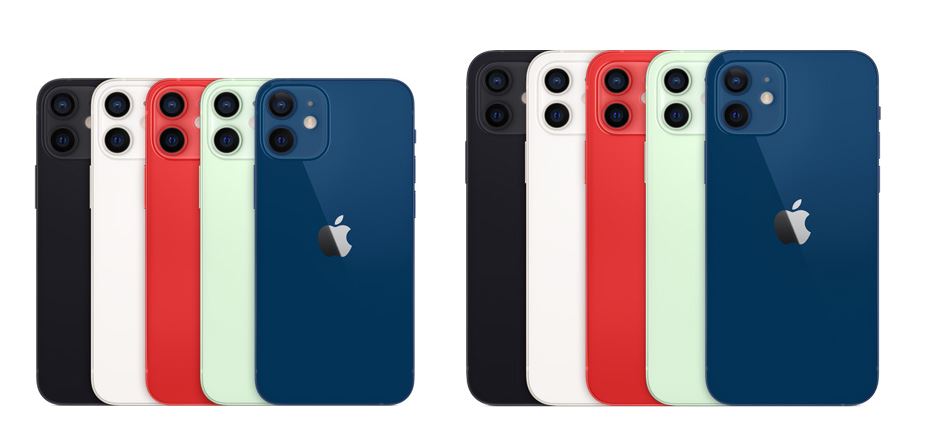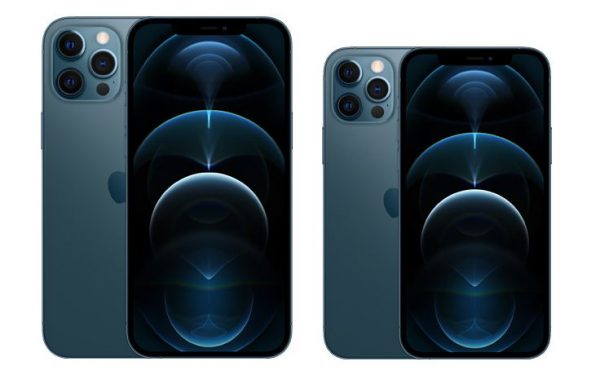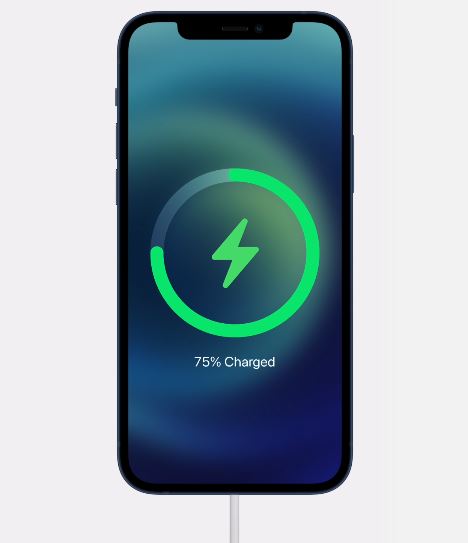Apple has come out with its latest entries in the iPhone lineup — the iPhone 12 series. But, with so many options available, it can be difficult to discern which one exactly is right for you. There’s the standard iPhone 12 as well as all its other variations, the iPhone 12 Mini, the iPhone 12 Pro, and the iPhone 12 Pro Max. Here, we discuss the main differences between these four models, including their prices, specifications, and other features.
Overview of All iPhone 12 Models

Rumors surrounded Apple for months on end before the official release of its latest models. With the COVID-19 outbreak still in full force, the company even delayed its announcement for a month. But, in early October, Apple finally unveiled its latest flagship products.
The Cupertino-based tech giant always seems to find itself at the center of gossip around the second half of every year because of its timing of releases. With its series officially available now, fans are flocking to the nearest Apple store to get a chance to buy one of their offerings.
If you have been researching its models, then you probably know exactly which model you want to get. However, if you have yet to really look into them, then there is a good chance you still don’t know which one to buy. Take a look at the overview of each iPhone 12 model below:
iPhone 12 and iPhone 12 Mini

For the design, the lineup returned to a familiar look to long-time Apple fans. Instead of the usually curved edges, Apple went back to a flat-edge design reminiscent of the iPhone 4 and 5 series. This is the same for all iPhones in Apple’s latest lineup.
The standard iPhone 12 and its Mini series consist of the same materials. They both sport a ceramic shield front with a glass back and an aluminum frame. The glass materials are, of course, made from Gorilla glass. Both have an IP68 rating for dust and water resistance. They also come with built-in Apple Pay.
Other features present on the iPhone 12 and iPhone 12 Mini include HDR display, true tone, wide color (P3), haptic touch, and a fingerprint-resistant oleophobic coating. They also have a 2,000,000:1 contrast ratio, 625 nits max brightness for typical, and 1,200 nits max brightness for HDR.
Both come in five colors: black, white, red, green, and blue.
iPhone 12 Pro and iPhone 12 Pro Max

The Pro and Pro Max are the younger siblings in the lineup, released more recently. They are also the ones that pack more features and come with higher price tags. Although they have the same flat edges and basic design, they have a sleeker overall look and better materials. They come with a ceramic shield front and a textured matte Gorilla glass back. For the frame, instead of aluminum, they sport stainless steel.
The iPhone 12 Pro and 12 Pro Max also boast the same features as the standard iPhone 12 and 12 Mini. They have Apple Pay, an IP68 rating for dust and water resistance, as well as all the other bells and whistles.
Unlike their older siblings, though, both come in four colors: silver, graphite, gold, and pacific blue.
iPhone 12 Series Prices
For many consumers, the price will always play a large role in the decision-making process. Sure, the iPhone 12 series may pack a hell of a punch, but some people balk at the very mention of a high price tag. Yet, the iPhone 12 models are not low-end smartphones. Quite the contrary, the iPhone is one of the most-coveted gadgets every year. As such, it only makes sense that its pricing reflects its demand.
With four different models on the market, though, memorizing the prices of each one, along with their individual storage spaces, can come as a challenge. Here’s a breakdown of each unit’s cost.
Price Breakdown
| Storage Capacity | iPhone 12 | Mini | Pro | Pro Max |
|---|---|---|---|---|
| 64 GB | $829 | $729 | ||
| 128 GB | $879 | $779 | $999 | $1,099 |
| 256 GB | $979 | $879 | $ 1,099 | $1,199 |
| 512 GB | $1,299 | $1,399 |
Let’s begin with the iPhone 12. If you want the 64 GB version, you will need to shell out $829. The 128 GB version will cost you $50 more at $879, and the 256 GB version will cost you $100 more than that at $979.
Next up is the iPhone 12 Mini. Since it’s a smaller model by size and specifications, it carries a more affordable price tag. The 64 GB version of it will cost you $729, while the 128 GB version will cost you $779. Finally, the 256 GB version has an $879 price tag, which is the same as the 128 GB version of the standard iPhone 12.
The 128 GB version of Pro will cost you $999, and the 256 GB version will cost you $ 1,099. If you want the highest storage, 512 GB, you will need to pay $1,299. On the other hand, the same storage spaces for Pro Max will cost you $1,099, $1,199, and $1,399, respectively.
These prices are, of course, off-contract. That means these are the prices you should expect to pay if you intend to pay an iPhone 12 model straight from Apple, unlocked. However, there are network providers that offer fixed plans with it. Ask your provider for details.
Software
What exactly powers the iPhone 12 models? Simple — all four models ship with iOS 14 out of the box. This is Apple’s latest iOS software, which was only recently released in September 2020.
Under the hood, its models come with Apple’s own A14 Bionic chipset as well as a Hexa-core CPU and Apple’s GPU. Although Apple did not disclose RAM specifications, some outlets have revealed the RAM size. It has 4 GB RAM, while Pro and Pro Max both have 6 GB RAM.
As mentioned previously, the iPhone 12 and 12 Mini are available in three versions: 64 GB, 128 GB, and 256 GB. Meanwhile, Pro and Pro Max are available in 128 GB, 256 GB, and 512 GB versions. True to form, all four iPhones do not come with expandable storage.
Specs and Size
Overview
| Model | iPhone 12 | Mini | Pro | Pro Max |
|---|---|---|---|---|
| Dimension | 5.78 x 2.82 x 0.29 inches | 5.18 x 2.53 x 0.29 inches | 6.33 x 3.07 x 0.29 inches | 6.33 x 3.07 x 0.29 inches |
| Size | 6.1-inch OLED screen | 5.4-inch OLED screen | 6.7-inch OLED screen | 6.7-inch OLED screen |
| Pixel density | 460 ppi | 476 ppi | 458 ppi | 458 ppi |
| Weight | 164 grams | 135 grams | 189 grams | 228 grams |
The iPhone 12 models naturally have differing specifications. To some Apple fans, the size and specs are what they consider when deciding which one to get.
The standard iPhone 12 has a 6.1-inch OLED screen with a resolution of 2,532 x 1,170 pixels. Its pixel density sits at 460 ppi. Size-wise, it measures 5.78 x 2.82 x 0.29 inches. It is also not that heavy as it only weighs 164 grams.
The Mini has a 5.4-inch OLED screen with a resolution of 2,340 x 1,080 pixels. Its pixel density sits at 476 ppi. In terms of size, it measures 5.18 x 2.53 x 0.29 inches and weighs significantly lighter at only 135 grams.
Pro has the same specifications as the standard iPhone 12 in terms of screen, resolution, pixel density, and size. However, it weighs a bit more at 189 grams. Finally, Pro Max has a 6.7-inch OLED screen with a resolution of 2,778 x 1,284 pixels. It has a pixel density of 458 ppi. It measures 6.33 x 3.07 x 0.29 inches in size and 228 grams in weight. Considering all these, the Pro Max is the heaviest and largest iPhone in the series.
All four models lack a fingerprint sensor. Apple has chosen to do away with this feature in favor of FaceID for security. Additionally, all models are enabled for 5G, are certified MagSafe, and have an IP68 rating for water resistance. They also have wireless charging and dual-SIM capabilities. However, Pro and Pro Max have an edge over their younger siblings as they both have a Lidar scanner.
No Power Adapter
Perhaps a common point of concern among Apple fans (and non-fans) is the charging brick. Fans have already adjusted to the lack of a headphone jack, which Apple first adopted with the iPhone 7. Now, though, they have another thing to look forward to — no charging brick. That means you will need to purchase a separate power adapter with a USB-C connection. Although the phones ship with a Lightning-to-USB-C cable, the lack of a power adapter is certainly a blow to the budget.
According to Apple, they decided not to put a power adapter due to environmental concerns. However, many fans are wondering why the iPhone 12 series still cost a lot of money despite the change. In addition to the charging brick, this will also be the first iPhone model to ship without a pair of EarPods.
Battery Capacity

When you pay such a high price for a smartphone, you want to know it can last a long time. Given that you do so much with your phone nowadays, the battery should at least extend until the day ends.
The standard iPhone 12 ships with a 2,815 mAh battery. It supports up to 17 hours of multimedia use and up to 65 hours of music play. Mini understandably has a smaller capacity with a 2,227 mAh battery. It supports up to 15 hours of multimedia use and up to 50 hours of music play.
Interestingly, Pro has the same battery as the standard iPhone 12. Pro Max, on the other hand, ships with a 3,687 mAh battery — the largest among the four. It supports up to 20 hours of multimedia use and up to 80 hours of music play.
All four models have Qi fast wireless charging capabilities. According to advertisements, you can charge the iPhone 12 models for up to 50% in just 30 minutes. If that’s true, then charging will come as a breeze. You can get a lot of use out of the smartphone and refresh its juice in a short amount of time.
Camera

Smartphone cameras seem to evolve and improve with each passing year, and that’s not just on the Apple flagship models. Brands and manufacturers everywhere know that consumers want a powerful camera right in their pockets, so they do what they can to enhance the cameras of their offerings.
For the main cameras, all iPhone 12 models come with a 12-megapixel wide camera as well as a 12-megapixel ultra-wide camera. They have dual-LED dual-tone flash and HDR for photos and panoramas. They can also shoot videos in 4K, 1080p, HDR, and Dolby Vision HDR.
In addition to these specs, though, the iPhone 12 Pro and iPhone 12 Pro Max have something extra. Both these models have an additional 12-megapixel telephoto camera. The iPhone 12 Pro comes with 2x optical zoom, while the iPhone 12 Pro Max comes with 2.5x optical zoom. As mentioned before, they also have Lidar scanners for depth.
As for the front-facing cameras, all four models see no difference. They all have a 12-megapixel selfie camera with SL 3D for depth and a biometrics sensor. These front-facing cameras are also equipped with an HDR feature.
Of course, given the powerful nature of the iPhone 12 models’ cameras, the phones understandably have a camera bump at the back. The cameras are a bit raised, which some may find unappealing. But, most people have no problem with the raised bump, provided they get a great camera in exchange.
Final Word
All in all, it’s easy to see why the iPhone 12 models in Apple’s lineup attract attention. They have impressive features and specifications, along with an equally high price tag to go along with it.
When it comes down to it, though, the choice is ultimately yours to make. Consider what matters to you the most. Are you more concerned about the specs or the price? Is there a specific color you have in mind? Examine your preferences, determine your budget, and make a decision.
